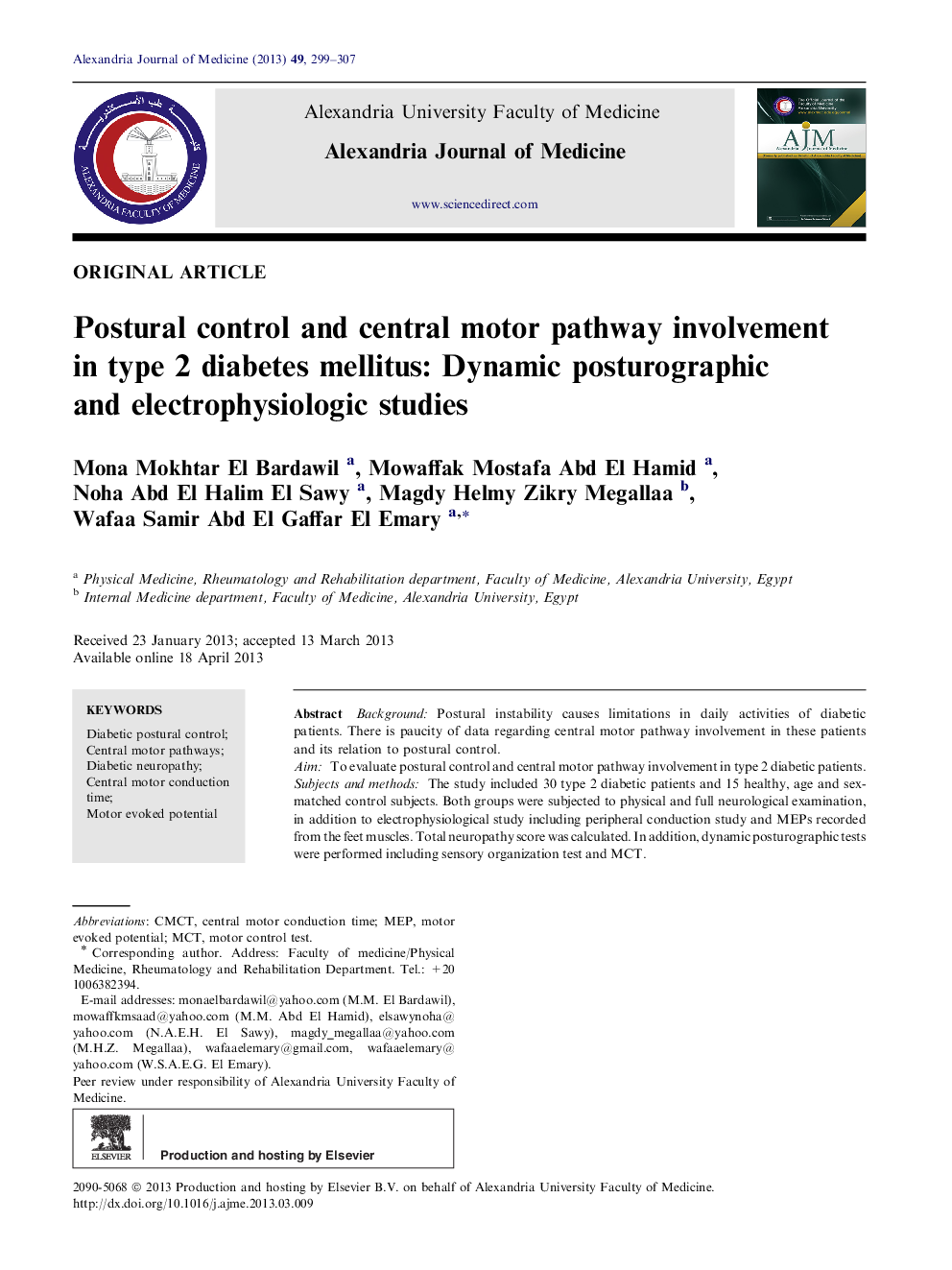| Article ID | Journal | Published Year | Pages | File Type |
|---|---|---|---|---|
| 3431717 | Alexandria Journal of Medicine | 2013 | 9 Pages |
BackgroundPostural instability causes limitations in daily activities of diabetic patients. There is paucity of data regarding central motor pathway involvement in these patients and its relation to postural control.AimTo evaluate postural control and central motor pathway involvement in type 2 diabetic patients.Subjects and methodsThe study included 30 type 2 diabetic patients and 15 healthy, age and sex-matched control subjects. Both groups were subjected to physical and full neurological examination, in addition to electrophysiological study including peripheral conduction study and MEPs recorded from the feet muscles. Total neuropathy score was calculated. In addition, dynamic posturographic tests were performed including sensory organization test and MCT.ResultsMost of the dynamic posturographic parameters were significantly impaired in diabetic patient group. There were significant abnormalities in most of the parameters of the peripheral conduction study of the patients compared to the controls. According to the Total neuropathy score, 20 patients had peripheral neuropathy. In addition, there was significant prolongation of the left CMCT, decreased left MEP amplitude and increased MEP resting motor threshold on both sides in the patients compared to the control group. Dynamic posturographic parameters showed correlation with most of the parameters of the peripheral conduction study and few of the MEP parameters. Logistic regression analysis showed peripheral neuropathy as the main factor implicated in postural instability in these patients. However, significant correlation was found between MEP amplitude and MCT composite score in patients without peripheral neuropathy.ConclusionAlthough type 2 diabetic patients had prolonged CMCT, decreased amplitude and increased resting motor threshold of the MEP response, peripheral neuropathy was the main factor implicated in postural instability. However, the central motor pathway changes documented could be implicated as a possible cause.
